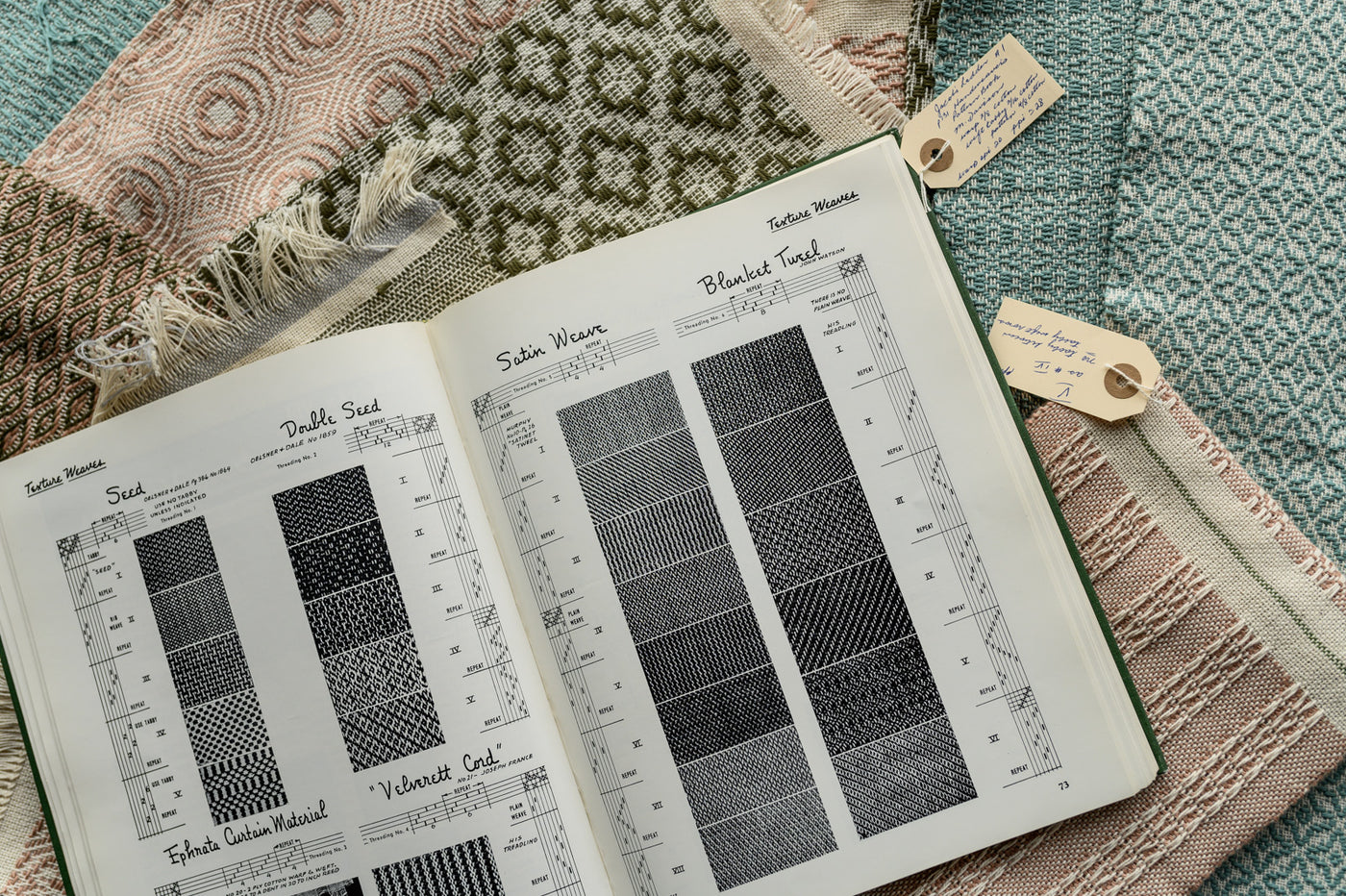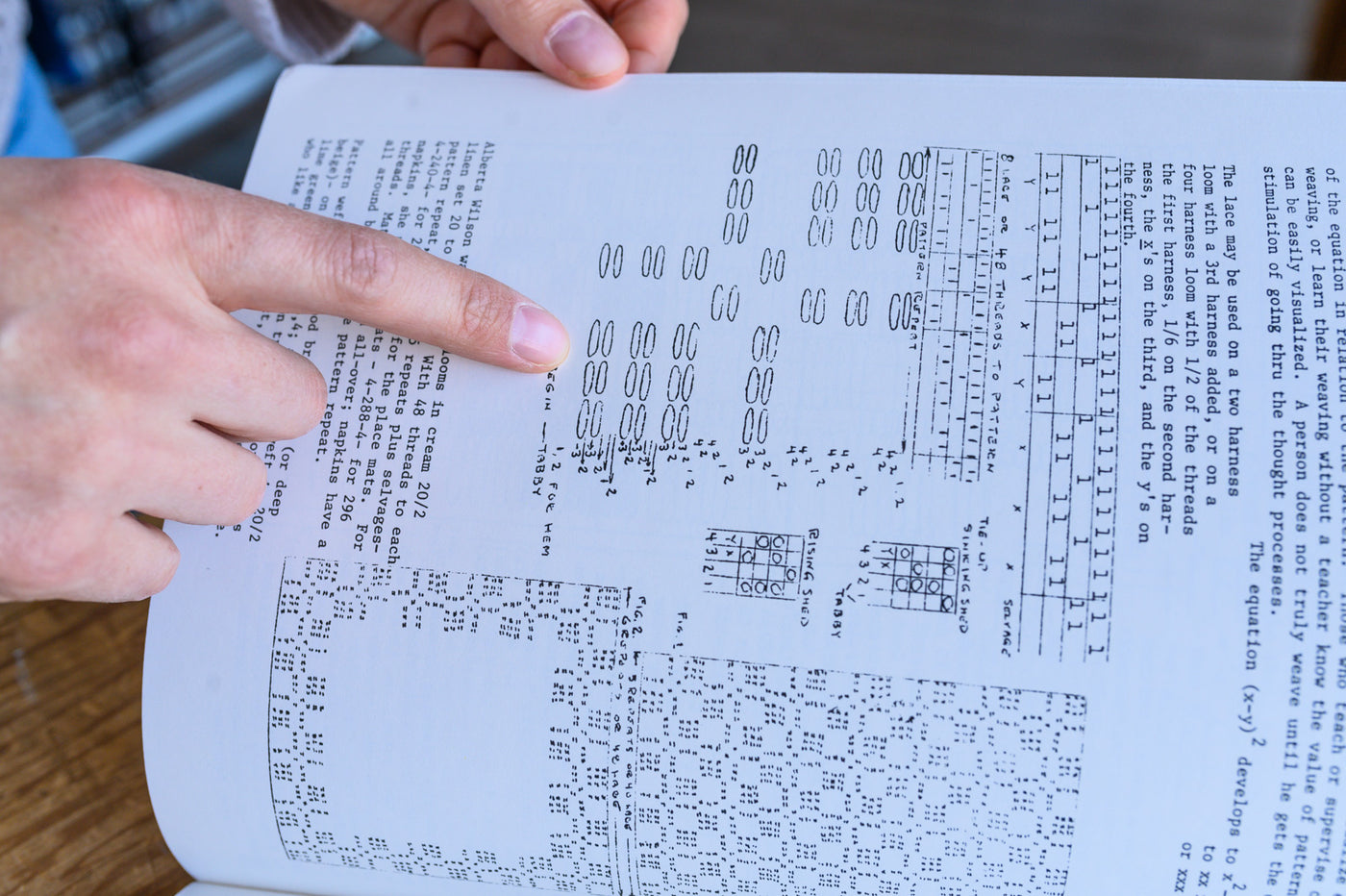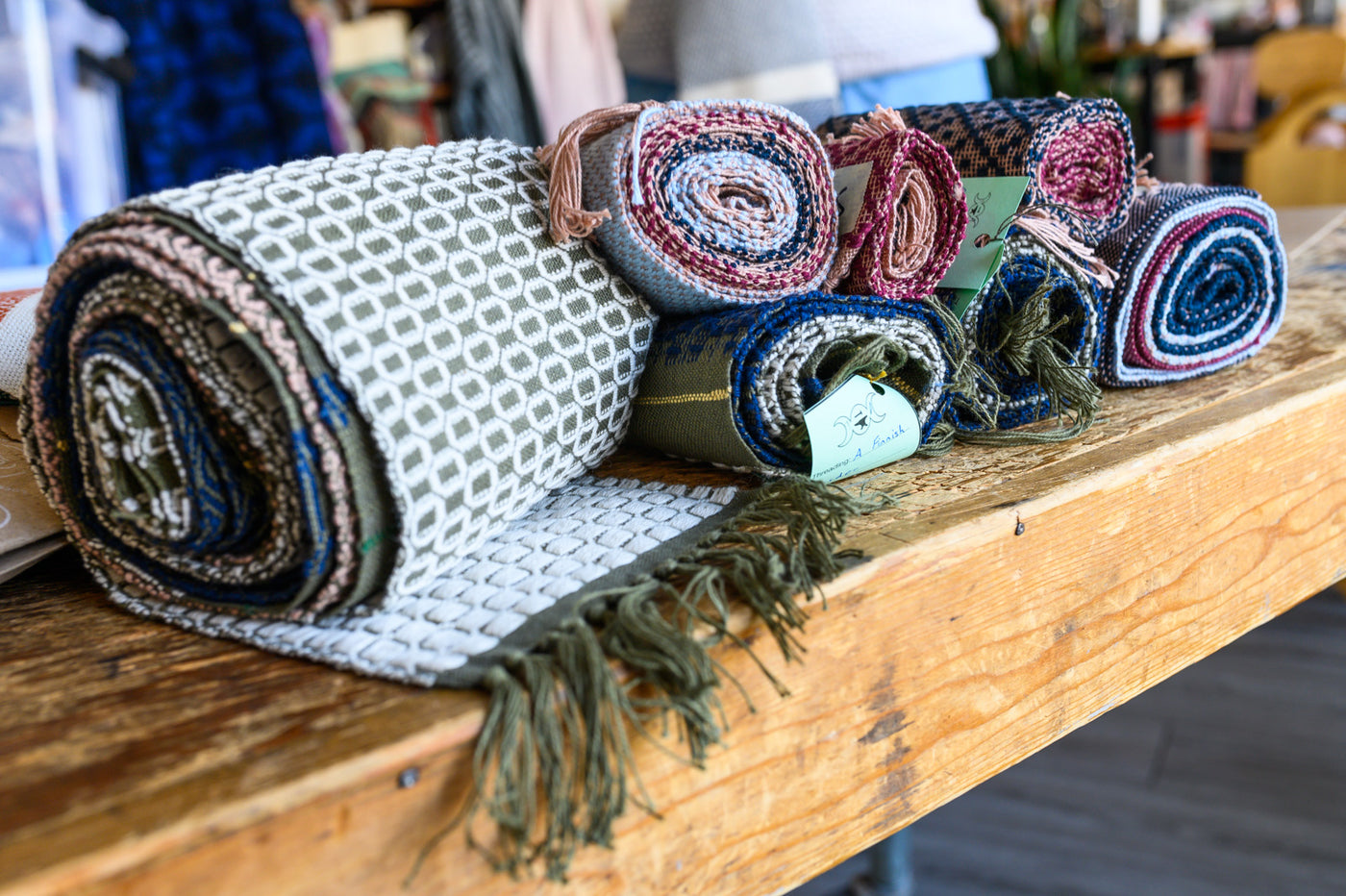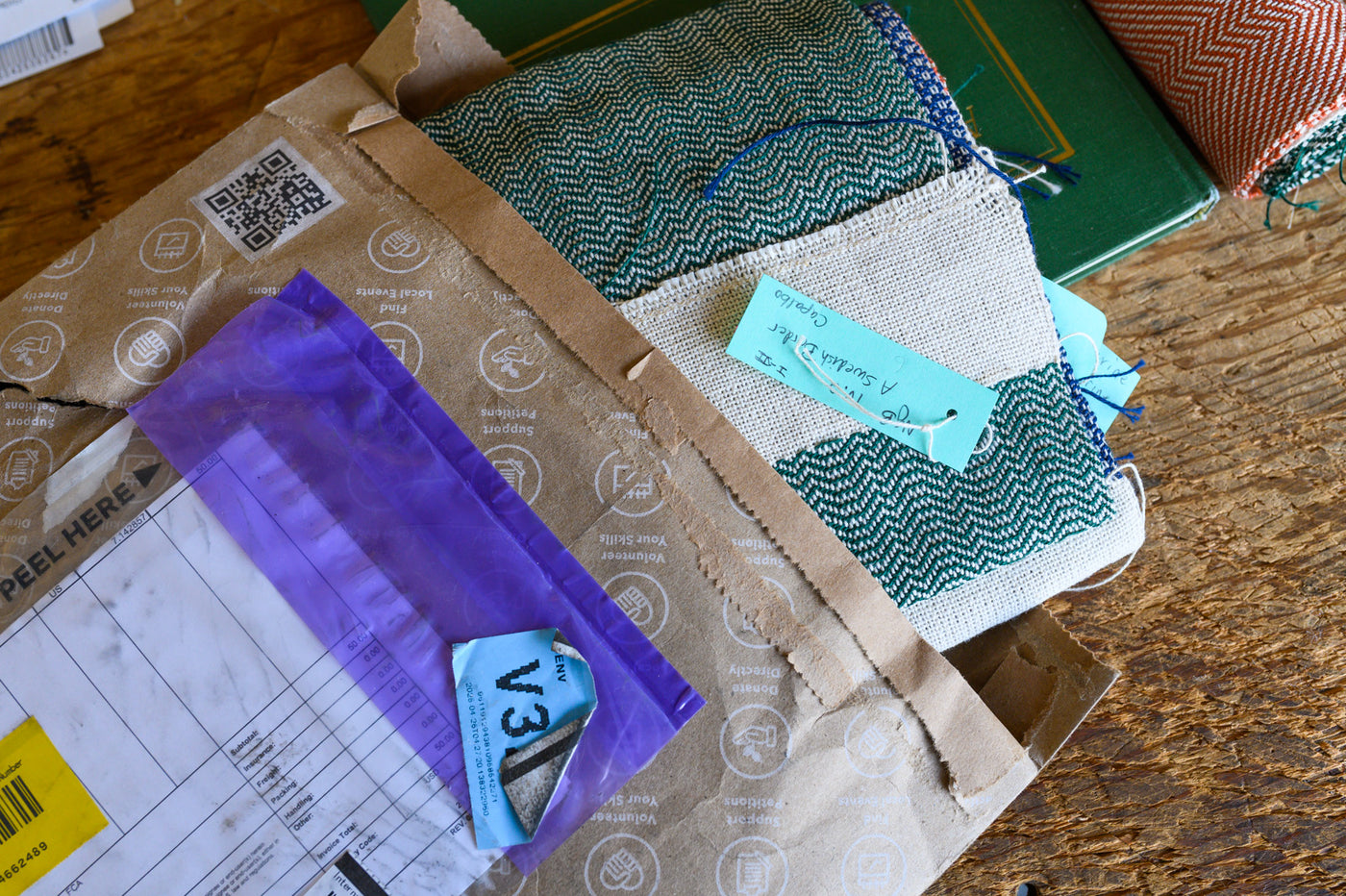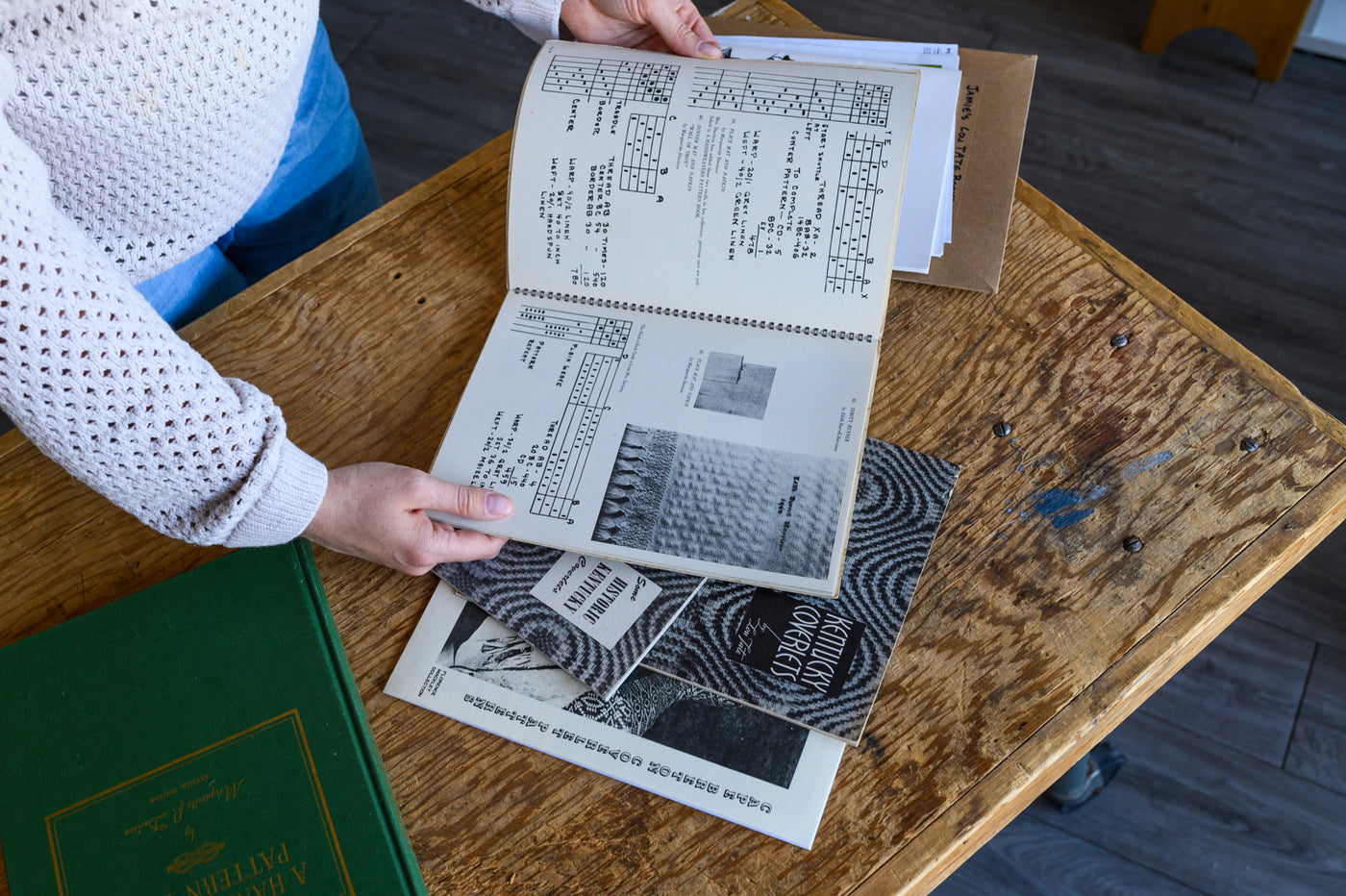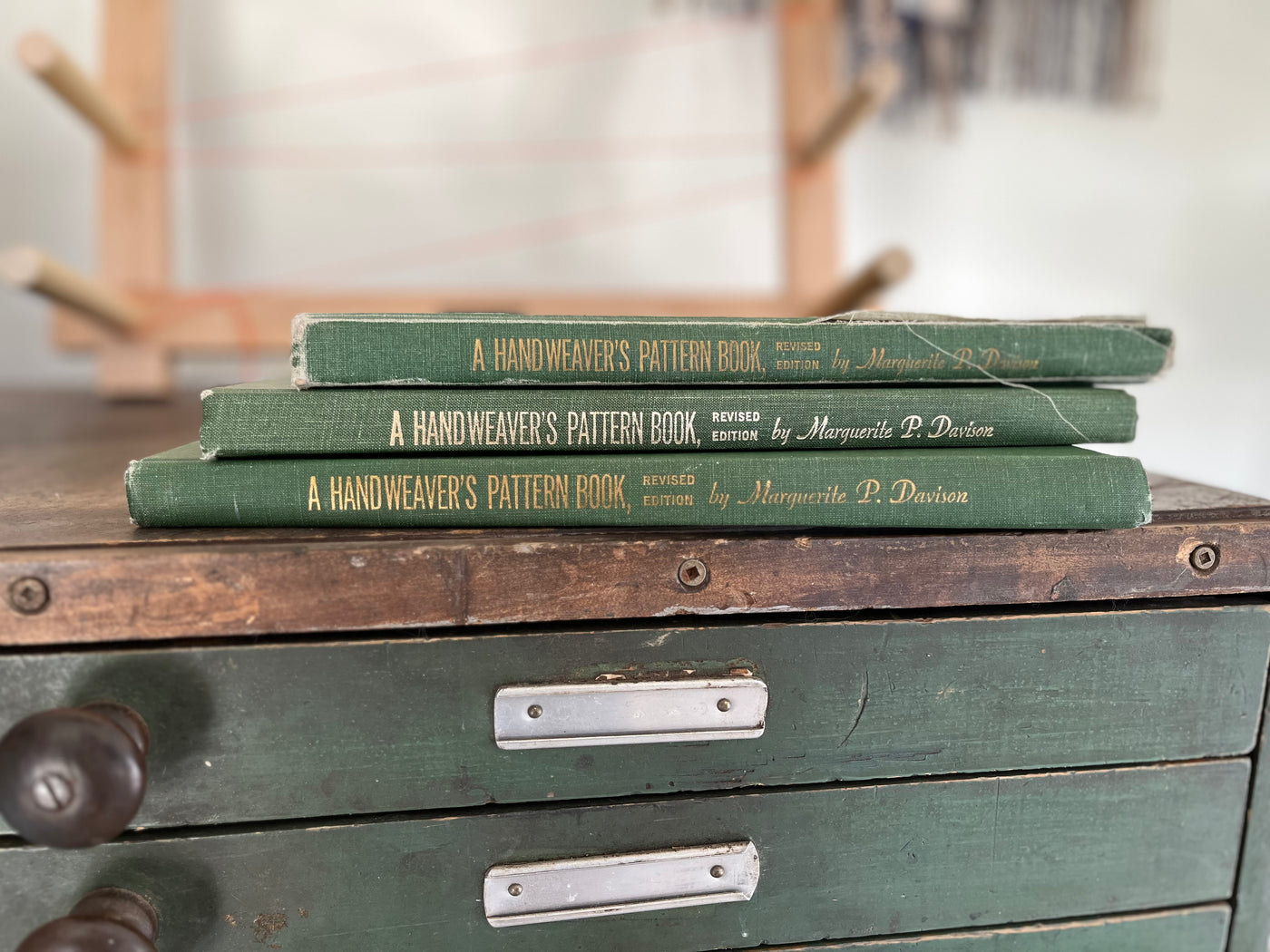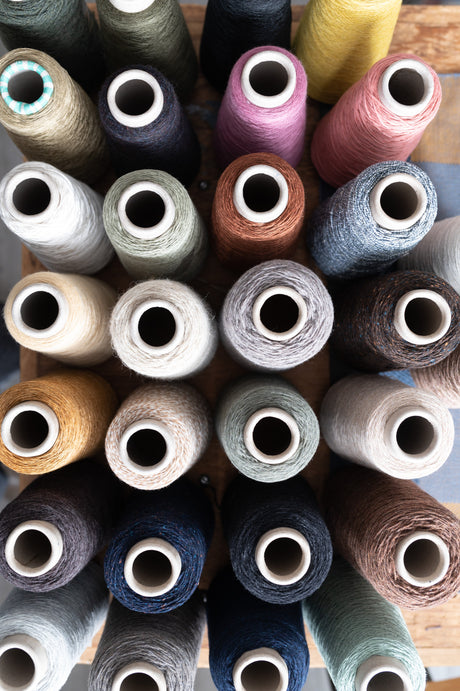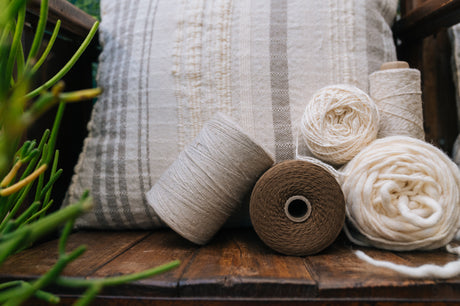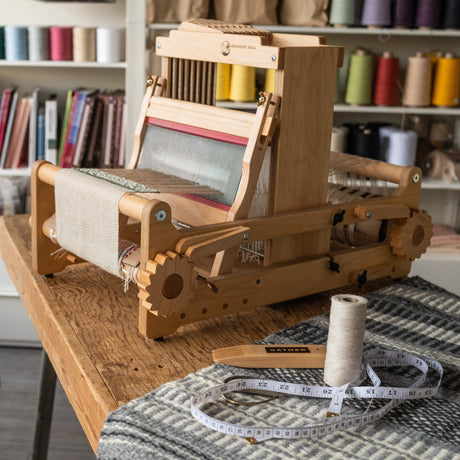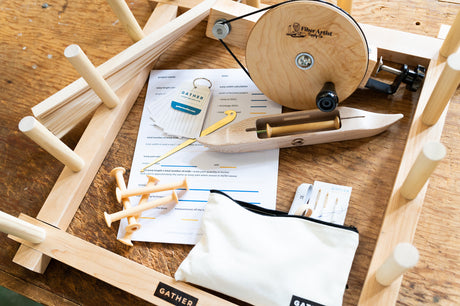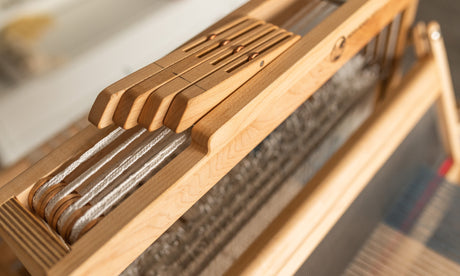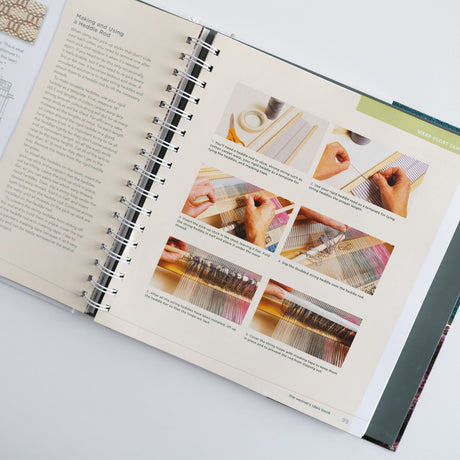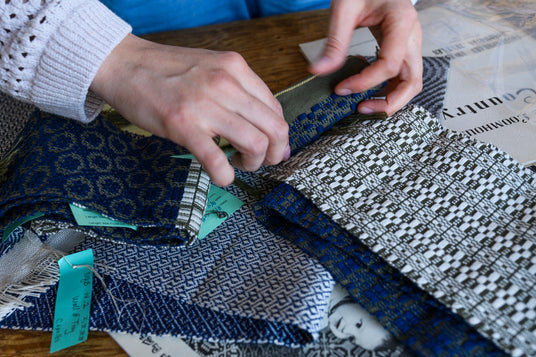
We're re-weaving the patterns from the beloved classic, A Handweaver's Pattern Book.
Gather Press will be publishing a book of drafts, projects, and weave structure wisdom drawing on designs from Marguerite Porter Davison’s beloved A Handweaver’s Pattern Book. We’re weaving beautiful new samples in colour, looking at how Davison designed her drafts, and coming up with fresh drafts based in the treasure trove of ideas in A Handweaver’s Pattern Book.
We’re still finalizing our plans for what the book will look like, but we know that we want to share original Davison drafts (corrected and updated to modern draft notation), full colour samples, new drafts to give you even more weaving inspiration, and crystal clear explanations of how each structure works.
Who was Marguerite Porter Davison?
Marguerite Porter Davison was a weaver, a writer, and a publisher who lived and worked in the US during the handweaving revival of the 1940s and 1950s. While she had a full and busy life and accomplished many things, we remember her primarily as an obsessive collector of weaving drafts.
Davison hunted down drafts in libraries and archives, received boxes full of scribbled scraps from old weavers looking to keep the tradition alive, collected books from across several countries, and at one point employed an agent solely to find rare weaving books for her.
But Davison didn’t keep her treasure trove of weaving patterns to herself. She turned her extensive collection into two books: A Handweaver’s Pattern Book and A Handweaver’s Source Book. Taken together, they are one of the most extensive, diverse and beloved collections of four-shaft weaving drafts ever compiled. Davison’s drafts cover twill, overshot, summer & winter, crackle, lace weaves, various novelty and textured weaves, rib weaves… anything you want to try, there’s a draft in Davison!!
What’s a draft?
A draft is the minimum information that you need to weave a particular variation of a structure: the bare bones threading, treadling, and tie up. Drafts are less detailed than patterns, which tell you how to make a specific project at a specific size. Drafts aren’t there to tell you what to make. They’re there to give you a whole range of possibilities that you can then pick up, modify, expand, combine, and create with.
Drafts are weaving information in its most concentrated form. That’s how A Handweaver’s Pattern Directory manages to cram an incredible 378 different threadings into a single book. For each threading there are anywhere between one and forty different treadlings. You could happily make projects based on Davison drafts for your entire weaving life and never run out of inspiration.
Who created these drafts?
This is one of the very cool things about A Handweaver’s Pattern Directory: it represents the work and wisdom of many individual weavers spanning several decades as well as various different weaving cultures. Marguerite Porter Davison created some of the drafts herself, but most of them she collected from other books, other weavers, and boxes crammed full of notes and scraps that she got hold of after other pattern collectors passed away.
Some drafts have no single creator or owner. No one person created plain weave or twill. Some more detailed designs do have named designers, although we often don’t know whether they created the design themselves or were simply the person who wrote down designs that were circulating within their community. Many drafts are part of specific cultural traditions, like the “Gerstenkorn” or “Barleycorn” drafts that Davison discovered through her friends in the Pennsylvania Dutch and German communities.
Weaving drafts aren’t like novels or paintings that have a single specific creator. They are part of a shared craft heritage and many have been woven, written down, picked up, altered, and re-circulated dozens or hundreds of times. One of the drafts is based on a coat that Davison’s friend Ginny wore. Davison liked it, so she figured out how to weave it and published the result as “Ginny’s Coat”. This is how weaving works: we pick up the work of other weavers, make it our own, and pass it on.
Why make a new book based on Davison?
Davison put together the first version of A Handweaver’s Pattern Book in 1944, then followed it up with an expanded version in 1950. She wove all of the samples herself, hand wrote all of the drafts, and self-published the book when publishers were unwilling to take a chance on it. All of this without the aid of computers while raising a family during World War II and its aftermath! A Handweaver’s Pattern Directory is an incredible accomplishment.
That said, it has some of the problems you might expect. The handwritten drafts are sometimes cramped, making it difficult to tell which pick or end comes first. The photos are black and white, and not particularly clear. It’s often really hard to tell from the photos what the finished cloth will look like. Davison was amazing, but she wasn’t superhuman. Given the circumstances she was working under, it will come as no surprise that there are many errors in the book. Some treadlings do not match the image provided whatsoever. Some chapters are flawless, but others have errors in nearly every draft. Because people hold Davison in such high regard, they have been hesitant to confidently identify these errors as errors, leaving the drafts uncorrected.
To make sure that people can confidently weave from these drafts, we are getting to work identifying and correcting errors as well as creating much more readable threading and treadling layouts. We’re switching the tie up to suit rising shaft looms, like the jack looms most of us weave on, instead of the sinking shaft tie-ups provided by Davison back when counterbalance looms were king. Bottom line: we want Davison’s drafts to be easier and more enjoyable to read.
We also want to bring the innovations of the past 80 years to the classics in Davison. There are many areas of weaving that have grown and developed since A Handweaver’s Pattern Directory was published (modern huck threadings, endlessly multiplying treadlings for crackle, even waffle weave!). It’s very exciting to see what happens when we combine the tradition as documented by Davison and the innovations circulating among modern weavers.
Davison gave the weaving community an incredible gift by documenting weaving drafts from the weavers that came before her. We want to keep her legacy alive by ensuring that collective wisdom remains accessible to today’s weavers and build on it to keep the weaving tradition lively and active.
It's so exciting to see these black and white images come to life in colour! These are some of our completed/in progress samples.
FAQ
What is Gather Press’ Marguerite Porter Davison project?
Gather Textiles will be publishing book of drafts, projects, and weave structure wisdom drawing on designs from Marguerite Porter Davison’s beloved A Handweaver’s Pattern Book. We’re weaving beautiful new samples in colour, looking at how Davison designed her drafts, and coming up with fresh drafts based in the treasure trove of ideas in A Handweaver’s Pattern Book. We’re still finalizing our plans for what the book will look like, but we know that we want to share original Davison drafts (corrected and updated to modern draft notation), full colour samples, new drafts to give you even more weaving inspiration, and crystal clear explanations of how each structure works.
What have you done so far?
This is a complex project with several stages. First, Jamie has taken the lead on translating all 378 threadings from A Handweaver’s Pattern Book into Fiberworks, checking for errors as we go. (Special thanks to Mel for her work on this!) Once drafts are ready to weave, Kim is choosing colour palettes and recruiting weavers, Mila is distributing yarn and .wifs, and Kim and Jamie are troubleshooting any new errors that get discovered in the weaving process. Meanwhile, Kim is hard at work on the back end, figuring out how to format drafts cleanly and accurately for publication.
Now that our samples collection is taking up several large totes, we’re starting to think about what to include in the book, what to use as inspiration for fresh designs, and how to tie it all together!
Once the full set of samples are ready, we’ll be wet finishing all of them ourselves to ensure consistency, then having a photographer take crystal clear photos of them. Eventually, we’ll have accurate, readable drafts to share with you accompanied by colour photos, available digitally as well as in a beautiful new hardcover book.
That’s so exciting. How can I help?
Really truly, spreading the word to your weaving nerd friends and sharing your excitement is the best way to help! We are working hard on this project and hearing other weavers get excited about it has been a massive boost. Your support really means the world. Follow us on instagram @gather_textiles or sign up for our newsletter to stay in the loop on project updates.Then be ready to celebrate with us when the book launches!
When will the book be available?
That’s going to depend on how quickly we can get all of these samples woven. We’re going to go hard on sample weaving in 2025 and adjust our schedule as we see how that goes. We’re optimistic about getting the book into the world on a reasonable timeline, but we’re also learning as we go and the project has a lot of moving parts.
Can I help with the weaving?
Short answer: a very tentative maybe. We’re starting slow with the actual sample weaving, and gradually expanding our network to include more and more weavers. Our ideal contributors are experienced Canadian weavers capable of completing more than one ~5 yard warp within a few months. If that sounds like you, by all means send us an e-mail. Please know that if we decline your help it’s likely more about our capacity to properly support sample weavers or a decision based in project logistics and not any judgment about your weaving ability.
What will the book look like? Will there be multiple formats?
We love weaving books and we LOVE love Marguerite Porter Davison’s work! We’re going to make sure that this is a beautiful, well-made book that will be a joy to use. It will have high quality colour photographs of the new samples and easy-to-read digital drafts. We hope to capture the spirit of Davison’s workl but to massively upgrade the image quality and overall usability.
We plan to have a hardcover book for people who love physical books as much as we do. We also plan to have a digital version at a lower price point to make sure we can get this treasure trove of weaving knowledge into as many hands as possible.
Are you allowed to publish Davison’s work? Do you have the rights?
As we are learning, American copyright law is much more complicated than our nice, straightforward Canadian laws! We want to make a book that can cross the border, so we’re being careful about what content we’re including. Most of what Davison published is currently in the public domain, although updates included in the revised version of A Handweaver’s Pattern Directory are still under copyright. We’re putting together the best possible collection of drafts that are available to us, writing our own content, and creating our own drafts to build on the incredible work Davison did. Our goal is to celebrate and respect her work while making something that has our own creative spin.
Weaving has always been one really big group project! A Handweaver’s Pattern Book has a lot of Davison’s original designs, but it also has dozens and dozens of designs from (even) older weaving books, from Davison’s friends, and from the collective knowledge of weavers. By building on the weaving tradition, we’re doing what Davison herself did nearly a century ago.
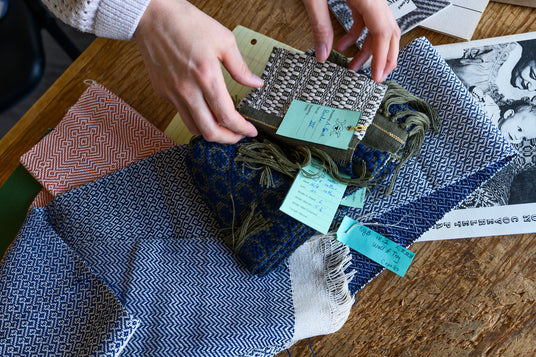
JAMIE HURLBURT
How I Became a Marguerite Porter Davison Fan
When we start weaving, we also start collecting: yarn, reeds, odds and ends, shuttles, bobbins, and of course books. My current weaving library is probably closing in on 100 books these days. But back when I got my first 4-shaft loom, my bookshelves were relatively bare. I had a couple of rigid heddle books and one 4-shaft book my husband had got me by accident. I was watching Jane Stafford’s videos and starting to connect with Gather Textiles, who had only just opened. I really do prefer to learn from books, though, so I had my radar up for useful ones that might be helpful for a beginning 4-shaft weaver.
My secondhand loom came with a box of books, but many were too dense and difficult for an enthusiastic newbie like me to make use of right away. I picked up a new copy of Anne Dixon’s The Handweaver’s Pattern Directory and immediately knew I had found a good tool. My first warp was a sampler where I wove through every single straight draw draft from Dixon. I wanted more books like this: packed with ideas, giving me the structural information that I needed to go off an experiment with. As I dug through the weaving rabbit hole, I started making a running list of other books that might be helpful. Pretty soon, Davison’s A Handweaver’s Pattern Book made it to the top of the list.

